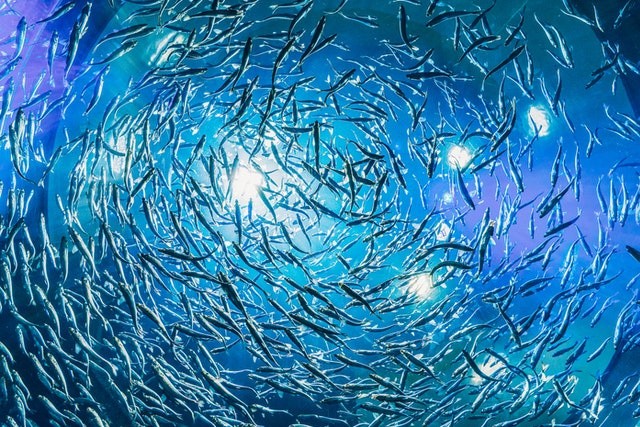The Pacific football fish, which has spiny teeth and a bulb on its head, is the third of its kind to wash up this year.

The Unexpected Discovery of Pacific Footballfish
A black blob found between rocks on San Diego's shoreline last week was first thought to be a ball of tar. But concerned surfers later realized that it was a unique creature, according to The Guardian.
Small dark eyes, a tentacle-covered appendage and bulb projecting from its head were all that could be seen through the creature's open underbite.
Researchers at Scripps Institution of Oceanography in San Diego quickly recognized it as a rare deep-sea resident known as a Pacific football fish. Only 31 individuals have ever been recovered in more than a century.
The most recent discovery, on the other hand, was much more significant. This is the third time this year that a Pacific footballfish has washed up in California, which is uncommon considering the fish's incredible elusiveness.
No one knows why the fish showed up, but scientists are eager to discover more about its origins.
According to Ben Frable, an ichthyologist at Scripps Institution of Oceanography and the Collection Manager of Fishes, the discovery of a handful of these fish this year may be a great chance for the researchers. He brushed off the thought that it may be a red flag. According to Frable, there would be a lot more of them.
Also Read : Man Baffled After Finding 'Monster-Like' Deep-Sea Creature Washed Ashore San Diego Beach
Features of Footballfish
Over 100 species of anglerfish are found across the globe, including the Pacific footballfish, which was made famous in Pixar's Finding Nemo. Using the bioluminescent bulbs that hang from their heads, they entice unsuspecting food into their jaws hundreds of feet below the surface.
Spikes on their bodies protect them from predators, and their sharp teeth are not for chomping but for trapping other fish, squid, and crustaceans that live at depths of 3,300ft, according to the California Academy of Sciences.
The males of footballfish becomes nothing but sexual parasites, sacrificing their internal organs. In return for nourishment, the male keeps just his testicles, which he uses to produce sperm.
Female, approximately 15 inches in length, and weighing 5.5 pounds, was in near-perfect condition, except for some minor scuff marks and an apparent piece missing that was most likely damaged by an inquisitive bird. Frable described her as spiky but fat, and he felt numerous large lumps in her belly.
In the end, they found out that she had sand in her intestines. They all come ashore with their tummies utterly empty. As to whether or not this is linked to their collapse, researchers don't know. The fish is now being stored for further research.
Efforts to Understand the Strange Footballfish
The discovery of a second recently acquired Pacific footballfish in Orange County's Crystal Cove in May has already improved scientists' knowledge of the species.
Visitors to the Natural History Museum in Los Angeles were able to see it for a period of time this year, as it was on exhibit for many months. The Natural History Museum's assistant curator of ichthyology, William Ludt, said the exhibit sparked excitement about the discovery.
A lot of information regarding this species is unknown, he noted. Researchers want people to be able to view it and learn about the environment around them and the unusual species that live right in their own backyard.
Related Article : Deep-Sea Anglerfish Found in South California Coast, What Does This Mean to the Environment?
For more news, updates about footballfishes and similar topics don't forget to follow Nature World News!
© 2025 NatureWorldNews.com All rights reserved. Do not reproduce without permission.





